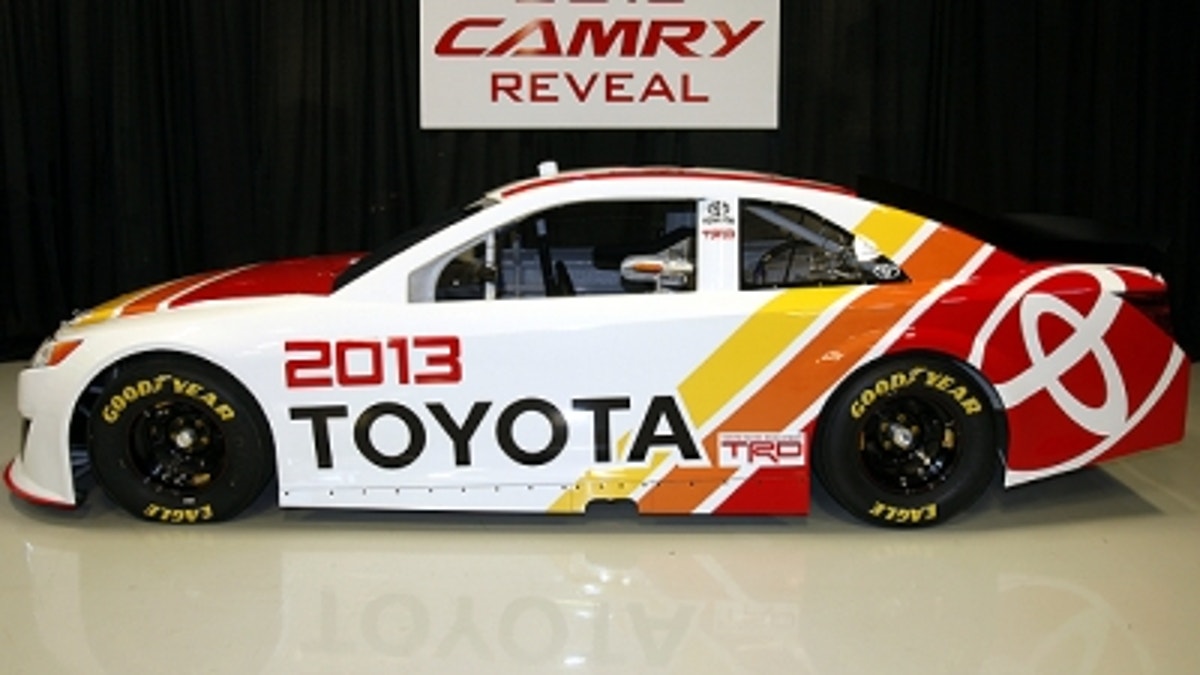
If you want to look at how far NASCAR has come with its redesigned 2013 Sprint Cup cars, dubbed “G6” for sixth generation, all you have to do is look back to 2007, the last time the sanctioning body introduced a new Cup car.
The 2007 car, at the time known as the Car of Tomorrow, was hailed for its safety advancements, but reviled for most everything else — aesthetics, drivability, inability to pass with and lack of differentiation from brand to brand. Most famously, after Kyle Busch won the first COT race at Bristol in spring 2007 he said in Victory Lane, “I’m still not a very big fan of these things. I can’t stand to drive ‘em. They suck.”
The good news? This time around, NASCAR has fixed just about everything that went wrong with the COT launch. And they have done so with a massive expenditure of time and effort to make sure the new cars look right and race right out of the box next year.
So when the 2013 Ford Fusion, Chevrolet SS and Toyota Camry reach the race track next February, they unquestionably will look much different than the current cars, much different from each other and more like their respective production counterparts.
More importantly, they should race a lot better, especially on the 1- to 2-mile tracks that make up so much of the Sprint Cup schedule.
“We’re doing more development work,” said NASCAR Vice President of Competition Robin Pemberton. “Rather than just pick a set of rules and say, ‘They’ll fix it,’ we’re trying to work with these teams and the manufacturers and the aerodynamicists … to try to narrow down and put this car in a better place as its delivered to the teams.”
Pemberton said the major emphasis right now is reducing the so-called “aero push,” the phenomenon that occurs when a faster car approaches a slower car but can’t pass because it stalls out aerodynamically.
“The shape of the car is done,” Pemberton said. “We’re just working on small fine-tuning in the front with the underbody and in the rear with the spoiler. But we’re concentrating on the front of the car. That’s a big push.”
Brian Vickers, one of the drivers who has done extensive testing with the G6 car, said it’s a major step forward from the current cars.
“The car drove good. It seemed to race well in traffic,” said Vickers. “We made some changes even at Charlotte (testing) that made the car even better. Honestly, the whole process — it's been a pleasure driving the cars from Talladega to Kansas to Charlotte. It's exciting to see NASCAR and all the teams and the crew chiefs and engineers and manufacturers really working together to try to come up with the very best product they can.”
NASCAR also reacted to input from manufacturers who were upset that the COT didn’t allow enough “character lines” that made the race cars look like the street cars. That absolutely will not be an issue with the G6 cars.
“It's important for us to make that car look as much as we can like the production vehicle you see on the streets,” said NASCAR Vice President of Racing Operations Steve O’Donnell. “So (we are) moving some logos around with the manufacturers, moving some numbers off the headlights and taillights, again, all in an effort to have that car reflect what's on the street and most importantly make it easier for our fans to identify who's in that car race in and race out.”
Tom Jensen is the Editor in Chief of SPEED.com, Senior NASCAR Editor at RACER and a contributing Editor for TruckSeries.com. You can follow him online at twitter.com/tomjensen100.
